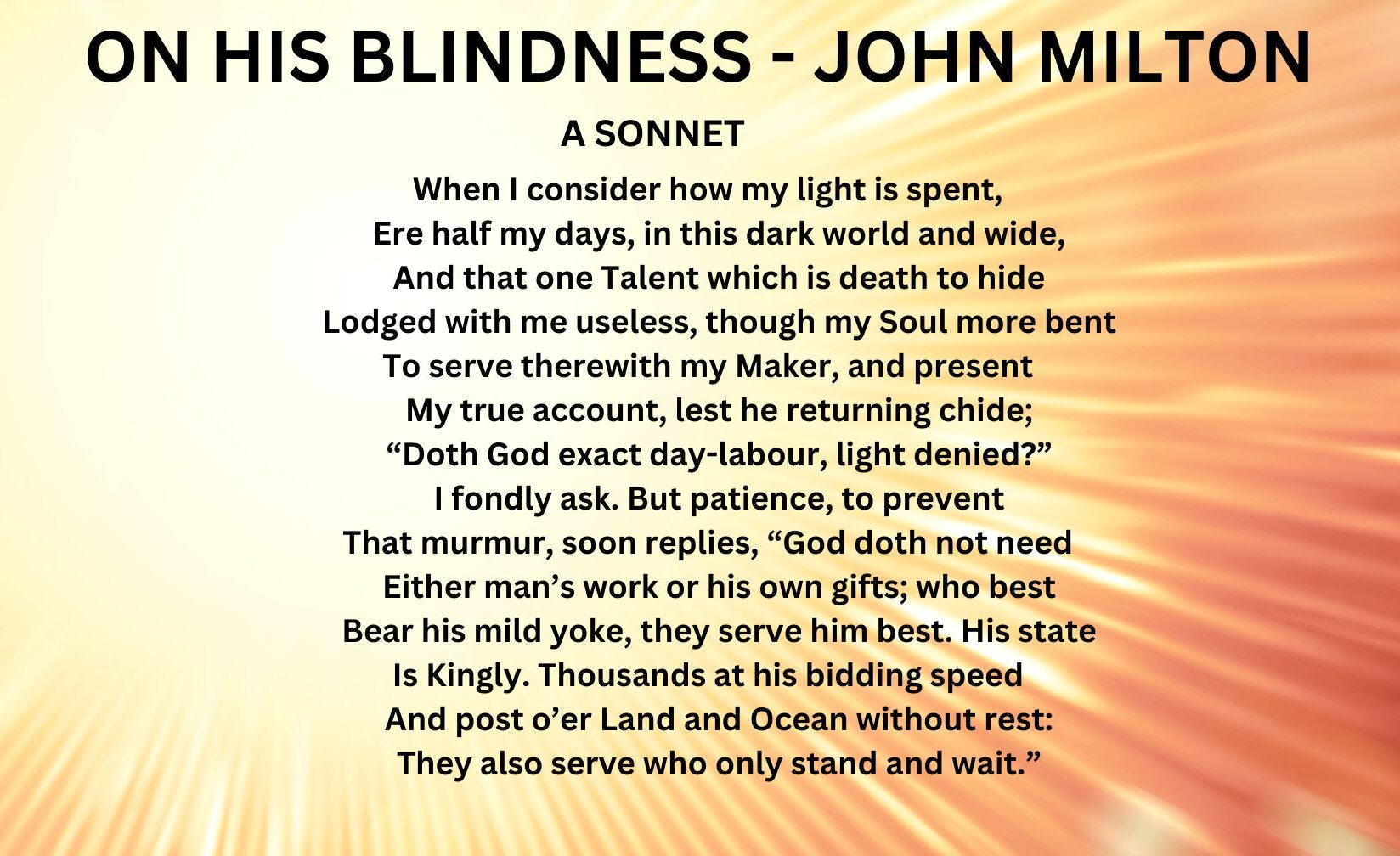“On His Blindness”
Introduction:
“On His Blindness” is a sonnet by John Milton, written around 1655. It was published in Milton’s collection of poems, “Poems of Mr. John Milton, both in English and Latin,” published in 1673.
The sonnet is also known by its first line, “When I consider how my light is spent.” The poem reflects on Milton’s blindness and his struggle to continue to serve God despite his physical limitations. “On His Blindness” is his response to this physical affliction in light of his faith and understanding of God’s will.

About the Poet:
John Milton was an English poet, polemicist, and civil servant, renowned for his significant contributions to English literature, particularly during the 17th century.
Here’s an overview of Milton’s personal life and major works:
Personal Life:
- Early Life: John Milton was born on December 9, 1608, in London, England, into a middle-class family. He was baptized at All Hallows Church in Bread Street, London. He received a classical education at St. Paul’s School and then attended Christ’s College, Cambridge.
- Education: Milton was an exceptional student, displaying a strong aptitude for languages and literature. He studied various subjects, including Latin, Greek, Hebrew, and modern languages which greatly influenced his later works.
- Political and Religious Views: Milton held strong political and religious beliefs, advocating for individual liberty and religious freedom. He supported the parliamentary cause during the English Civil War and wrote numerous political tracts defending republican principles and denouncing censorship.
- Blindness: In his early forties, Milton gradually lost his eyesight due to glaucoma, eventually becoming completely blind. Despite his blindness, he continued to write and compose some of his most famous works with the assistance of scribes.
His Major Works:
- “Paradise Lost” (1667): Milton’s epic poem “Paradise Lost” is considered one of the greatest literary achievements in the English language. It recounts the biblical story of the Fall of Man, exploring themes of sin, redemption, and the nature of evil.
- “Paradise Regained” (1671): This sequel to “Paradise Lost” focuses on the temptation of Christ in the wilderness and his ultimate victory over Satan. It is a shorter and more theological work compared to its predecessor.
- “Samson Agonistes” (1671): A dramatic poem inspired by the biblical story of Samson, this work explores themes of fate, heroism, and redemption. It is considered one of Milton’s major works in the genre of classical tragedy.
- “Lycidas” (1637): Written in the form of a pastoral elegy, “Lycidas” mourns the death of Milton’s friend Edward King, who drowned at sea.
- Prose Works: Milton wrote numerous prose works, including political tracts such as “Areopagitica” (1644), which defends freedom of speech and expression, and “The Doctrine and Discipline of Divorce” (1643), advocating for the liberalization of divorce laws.
Here’s a detailed analysis of the poem:
